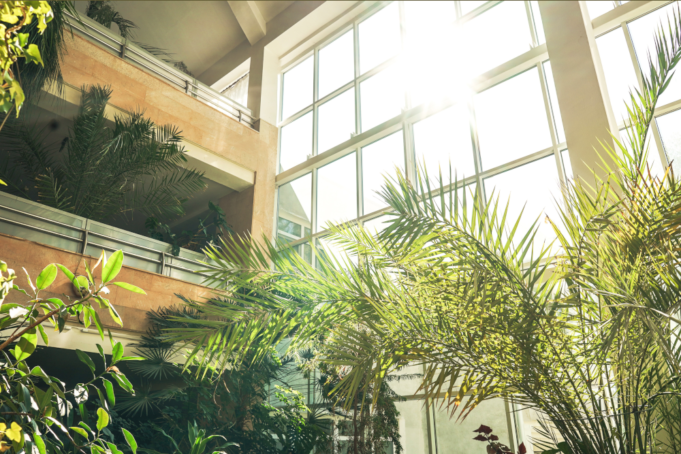In today’s healthcare landscape, healing hospital design is transformative. Recent projects and studies highlight how merging historical preservation, art, and advanced technology can create environments that not only heal but also inspire. For hospital facility management professionals, embracing these elements can lead to remarkable improvements in patient recovery and staff well-being.
Historical Preservation and Art in Healing Spaces
Imagine walking into a healthcare facility that feels more like a sanctuary than a hospital. That’s what senior interior design students at The University of Southern Mississippi (USM) achieved when they transformed the historic Eureka High School. Their projects, like “Brushstrokes of Hope” and “Alzheimer’s Arcadia,” seamlessly blended historical architecture with therapeutic art to create serene, restorative environments. These designs used natural lighting, biophilic elements, and thoughtfully curated art spaces to foster emotional and mental recovery.
NYC Health + Hospitals, in collaboration with the Jameel Arts & Health Lab, is pushing the envelope even further with a groundbreaking study on the impact of murals in hospitals. This research explores how large-scale artworks affect patients, staff, and visitors across different cultures. Early results are promising, showing that murals can enhance workplace belonging, improve the perceived quality of care, and boost overall well-being. It’s a vivid reminder of art’s power to transform spaces into true healing environments.
Technological Advancements in Pediatric Care
Children’s hospitals are at the forefront of integrating cutting-edge technology to enhance patient care and transform physical spaces. Akron Children’s Hospital, for instance, implemented an AI-powered Pediatric Early Warning Score system. This innovative system analyzes real-time data to predict adverse events, allowing for timely interventions and reducing the cognitive load on clinicians. The result? Improved patient outcomes and a safer, more efficient care environment.
At Loma Linda University Children’s Hospital, the future is now. Their interactive digital wall, Loma Land, turns hospital visits into magical experiences. Children and their families can interact with personalized animated creatures, creating moments of joy and distraction. This blend of technology and design not only makes the hospital experience more pleasant but also supports the healing process by providing a much-needed escape from stress.
Key Takeaways
- Historical and Artistic Integration: Combining historical architecture with therapeutic art creates healing environments that honor cultural heritage and promote emotional well-being.
- Art’s Impact on Healing: Murals and other visual arts in hospitals can enhance workplace belonging, improve perceived quality of care, and boost overall well-being, as shown by international studies.
- Technological Innovation: AI and digital technologies in children’s hospitals enhance patient care by improving monitoring systems and creating engaging, calming environments for young patients.
By embracing historical preservation, art, and technology, implementing a healing hospital design can create spaces that significantly enhance the experiences of both patients and staff, leading to better healthcare outcomes. This integrated approach not only heals but also inspires, making the hospital a place of hope and recovery.






